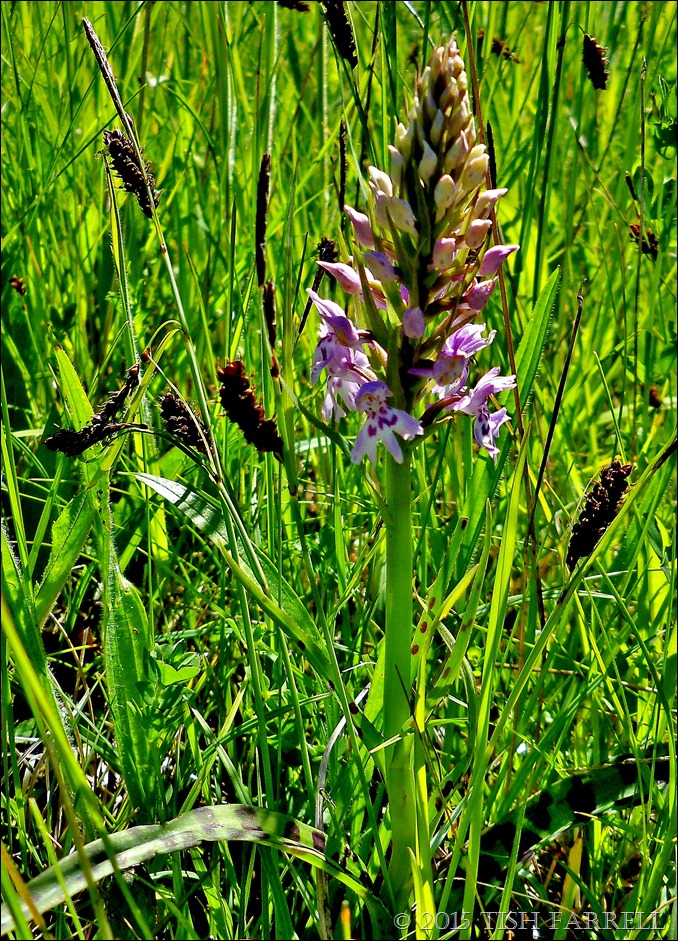
In case you don’t know Meg she is presently in Warsaw, and if you want to get in lots of vicarious walking with fascinating things to see (and sometimes eat) please join her there. Anyway, this wild orchid is for her, and so is this walk, since it took me back to Windmill Hill (which is actually only across the road from my house), to search once more for signs of spring.
At least last Friday the sun was out, but we still have a continuous chilling wind. As I may have said elsewhere, it feels as if it has blown across an ice sheet before ending up in Shropshire. Brrr. So far it looks as though ‘clouts’ will not be cast in June, never mind in May. I, for one, am sticking to my many garment layers, which may or may not include a vest.
But back to the orchids. This one took some finding, but I had promised Meg I would look. She had read my mention of limestone-meadow plants in an earlier post about Windmill Hill, and wanted to see more. This lovely little plant, about a hand’s span tall, has the plain name of Common spotted orchid. It was growing at the foot of the hill, and I had seen the darkly spotted leaves a week or so before. They are definitely being slow to flower this year. They probably don’t like the wind either.
To find them I went the long way round, once more up the Linden Walk whose ancient limes are now bursting into juicy green clouds. Soon (I hope) they will be flowering, and then I can get high on the scent, as well as on the sight of them. (Herbalists use lime flowers as a sedative, quite a strong one, so don’t use the flowers without expert guidance). Good old Dr. William Penny Brookes, Much Wenlock’s erstwhile physician, and the man who planted this avenue over a hundred years ago, knew what he was at on the life-enhancing front. Bravo Dr. Brookes.
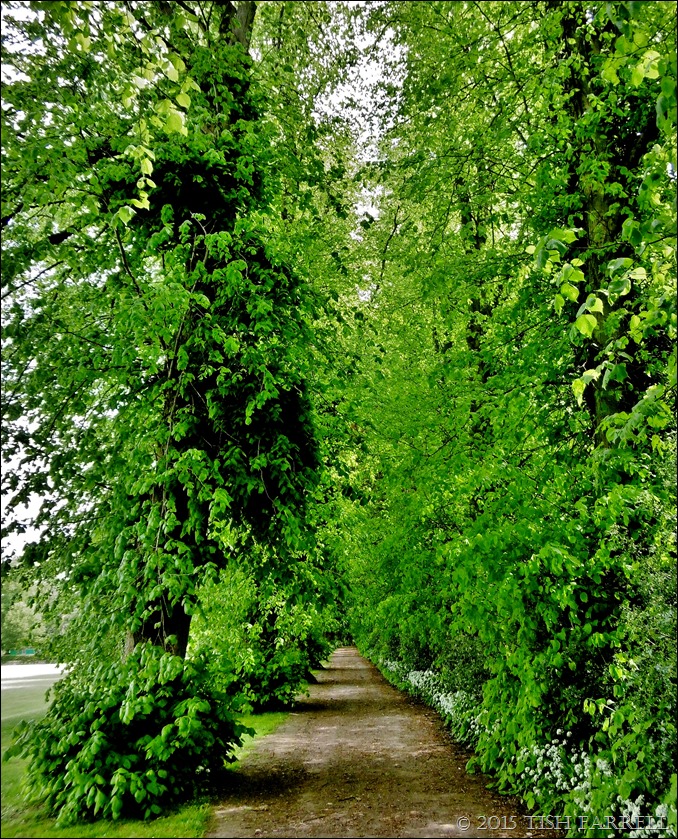
Once out of the Linden Field and onto the hill, I’m taking the low path around the bottom when along comes octogenarian, Jimmy Moore, our local marathon man. He’s out on his morning run – an example to us all. He’s raised over £30,000 for charity. Seeing him approach in his buttercup yellow shirt is enough to lift the spirits sky-high. Keep on running, Jimmy.

As he passes me, he still has breath to crack a joke, and to say my photo of him will doubltless be worth a fortune. He speeds away, and I meander on, peering into the meadow grass.
The cowslips are over, but there are low growing clumps of Common bird’s foot trefoil, Lotus corniculatus if I am not mistaken in my identification from the classic Keble Martin work on British flora. As you can see from its pea-like flowers, it belongs to the legume family.
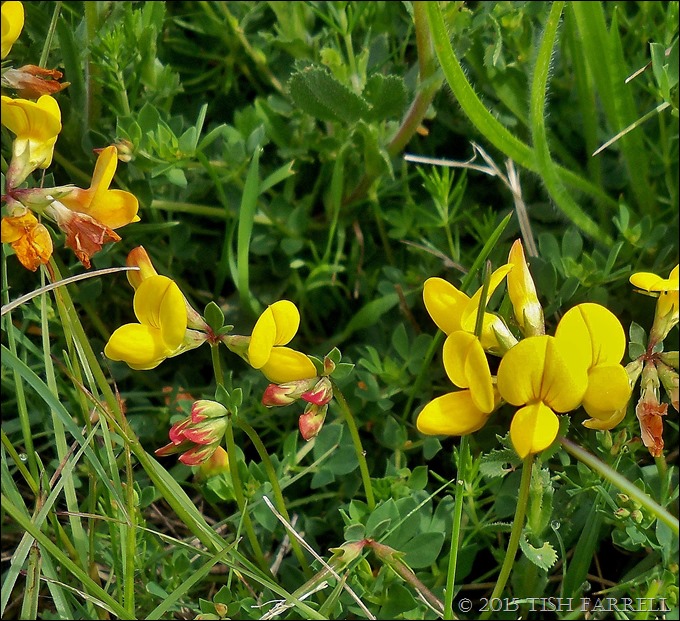
Up the hill to the windmill and there are carpets of buttercups, and a little family pretending the windmill is a castle. I like overhearing their interpretation of these remains. I shall think of them differently from now on:

The search for orchids next takes me along the hedge line where the open meadow becomes woodland. And here I find the first elderflowers of the year. I love their creamy colours, and they make the most delicious sorbet (recipe at the end).
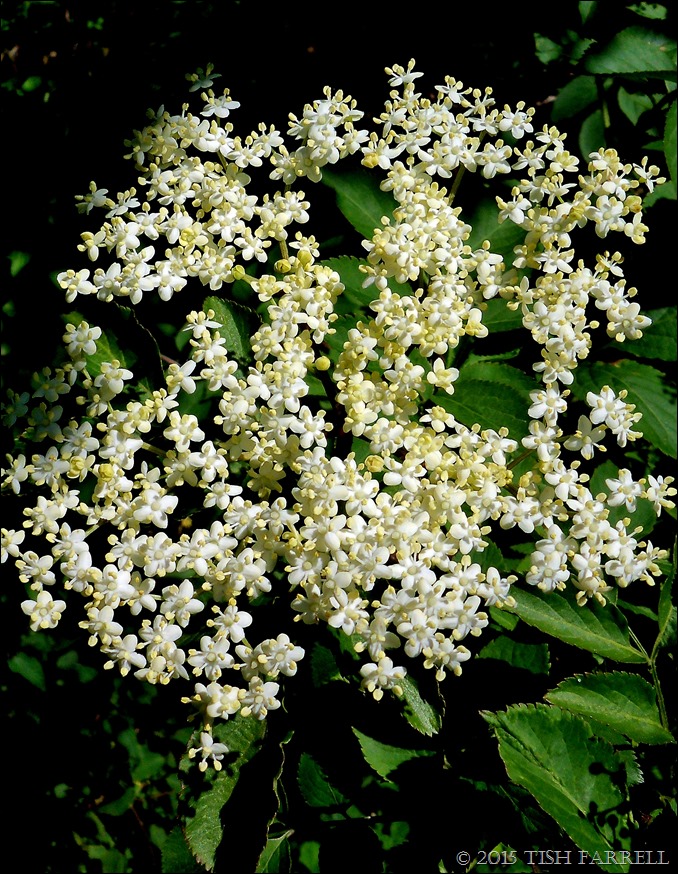
The flowers also make a fragrant tea that is anti-catarrhal, and when mixed with peppermint is a good remedy for colds and flu. The elder tree itself has magical connotations, and features in many traditions of indigenous peoples around the world, including North America’s First Nations’ tales. The dark purple berries are of course now used in a commonly available anti-viral that goes under various names that derive from its botanical name Sambucus. The berries’ efficacy was trialled some years ago by Israeli scientists, if I remember rightly, and used to treat HIV- patients. They are thus, not by any means, ‘a quack cure’.
Into the wood, and the flowers of my earlier spring walk (which you can find HERE) the arum lilies, violets and wild garlic, are over and, beyond a few tiny wild strawberry flowers, there’s not much to be seen until I reach the roadside verge. First the Oxeye daisies…
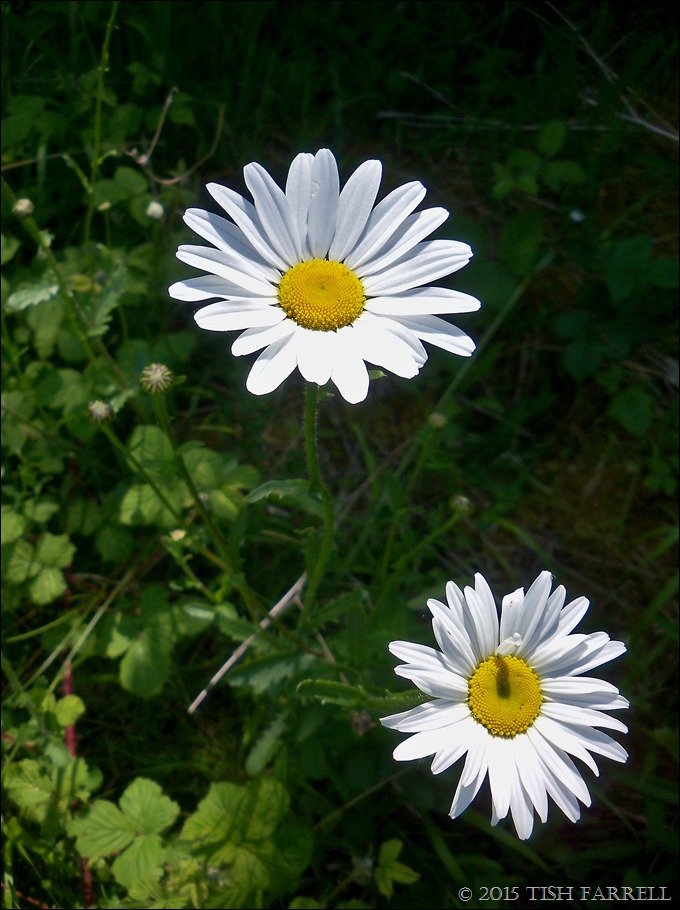
And then the orchids, although so far only a handful are in flower. Here’s what they look like before they bloom, along with a glimpse of a wild strawberry flower at 3 o’clock:

And now as promised a recipe:
Elderflower Sorbet
8oz /1 cup/ 250 gm fair trade unbleached granulated sugar
1 pint/0.5 litre water
2 lemons
2/3 big heads of elderflowers
First pick the elderflowers when they are freshly open , and on a dry day. Shake out the bugs but do not wash. Keep the heads intact.
Pare the rind finely from the lemons, and squeeze out the juice.
Heat the water and sugar in a pan, starting gently until the sugar has dissolved, add the lemon rind and then boil briskly for 5 minutes.
Remove from the heat. Add lemon juice and elderflower heads. Leave to cool.
Strain into a suitable container and freeze. After an hour or so, when the sorbet is slushy and starting to set , you can give it a good mash with a fork to break up any crystals, and return it to the freezer.
Alternatively, strain and churn in an ice cream maker.
This sorbet is delicious with fresh strawberries.
And guess what, as I finish writing this post the wind has dropped, and it is suddenly HOT. Just the weather for sorbet. Hurrah!
P.S. It didn’t last, so we had broad bean soup instead.
copyright 2015 Tish Farrell
Please do drop in on Jo’s Monday Walk and Meg’s Warsaw2015 if you are up for some more interesting excursions.
















































